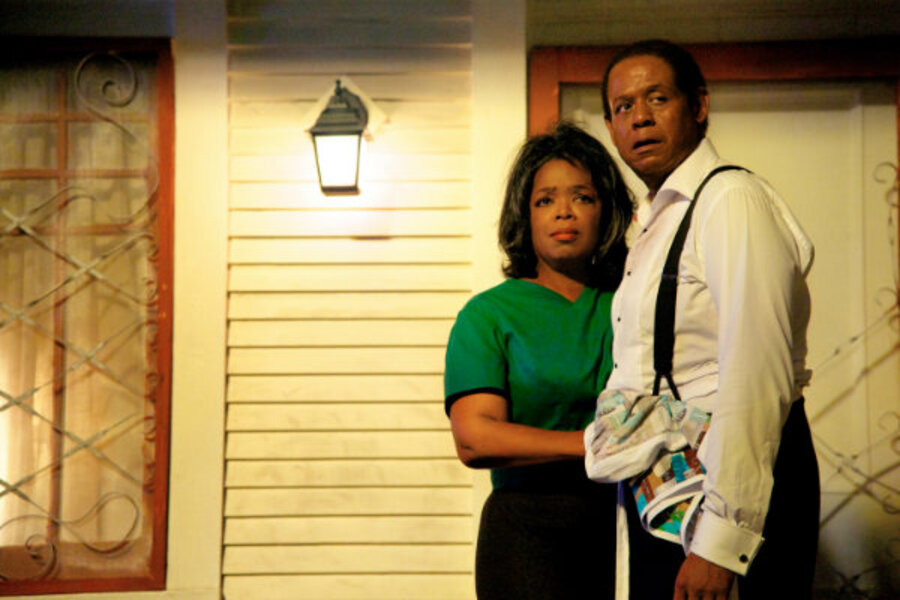Early African-American workers in DC were more than silent witnesses
Loading...
| South Hadley, Mass.
Yes, the butler did it. But not as others have written of "Lee Daniels’ The Butler,” which topped the box office for more than two weeks in August. The movie’s fictionalized account was inspired by the life of Eugene Allen, the butler who worked 34 years in the White House, serving eight presidents from Harry Truman to Ronald Reagan.
The journalist who brought Allen’s experiences to light, Washington Post reporter Wil Haygood, wrote that “[h]is is a story from the back pages of history. A figure in the tiniest of print. The man in the kitchen. He was there while America’s racial history was being remade.”
African-Americans have always been there, in those rooms of executive power. A few recorded their experiences. Alonzo Fields penned “My 21 Years in the White House” after retiring as chief butler in 1953. Lillian Rogers Parks’s account of her family’s five decades as domestic staff (1909 to 1960) led to the celebrated 1979 TV miniseries “Backstairs at the White House.” Elizabeth Keckley described her time as Mary Todd Lincoln’s dressmaker and confidante in “Behind the Scenes.” Paul Jennings came to the White House in 1809 an enslaved servant; later, as a free man, he wrote “A Colored Man’s Reminiscences of James Madison.”
Most didn’t write their lives. Public memory has largely forgotten them. “The Butler” prompts me to relate the story of one man who worked for 21 secretaries of state under 14 presidencies. A man whom Franklin Delano Roosevelt chauffeured to the White House for congratulations on his retirement at the age of 77, after one secretary of state had waived federal law and another, Henry Stimson, subverted it to keep him past the mandatory retirement age. A man whose life and contributions are little known today, yet whose story reveals the troubling ties between African-Americans and the nation’s capital.
Edward Augustine Savoy was born a free person of color in Washington City, as the nation’s capital once was called, in 1855. His father was a leading caterer and public waiter to federal officials. His mother aided the Underground Railroad. After the Civil War, both parents worked for Secretary of State Hamilton Fish, who hired a 14-year-old Edward Augustine as a page in 1869. Thus began a career that would span 64 years.
E. A. Savoy was privy to the paper trails of rifts and wars between nations. He witnessed the assassination of President James Garfield. He delivered ultimata and passports to diplomats, becoming known as the State Department’s international “bouncer.” In two such instances he tricked successive Spanish ministers at the outbreak of the Spanish-American War into accepting their own passports – so they could then be asked to leave the country. He carried home the treaty from Paris that ended that war, witnessing and sealing other treaties. He kept ambassadors of warring nations apart when their visits to the State Department coincided.
When he finally retired in 1933, he held one of the highest government positions possible for an African-American at the time, chief messenger to the secretary of State. Less than a year after his death in 1943, a Liberty ship would be launched in his honor, the SS Edward A. Savoy.
Barely five feet tall, known for his tact, charm, and wit, Savoy was considered an anomaly. On meeting him for the first time, according to a newspaper account from the day, one congressman confided, “I thought he was at least the Ambassador from Dahomey, and was quite taken back when he volunteered to take my card to the Secretary.”
Often chosen as the subject of human-interest stories, Savoy appeared no less than six times in Time magazine, which liked to record “Savoy-isms”: “When I meet a man who is domineering to his inferiors, I know he is sycophantic to his superiors, and no gentleman.” Or, on the language of successful diplomacy, “Never say what you want to say, and never say anything before you think twice.” The New York Times gave his obituary a full column and photo.
Yet he never received the status, respect, or salary of the skilled diplomat he was. To government officials and the media he was “Eddie,” the “colored” messenger or “diminutive Negro,” rarely Edward, certainly not Edward Augustine. The boundary defined by ideas of “race” stood firm, cutting his story, and that of his family, which grew out of the paradox of Washington, D.C.
African-Americans served the federal government since the capital was deliberately carved out of tobacco plantations and ports where slavery thrived. In 1790, Maryland and Virginia held more than half the nation’s nearly 700,000 souls in bondage.
Enslaved and free men cleared sites for the imagined capital. They fashioned building materials, then built the city, including much of the Capitol and the President’s House (later called the White House). Thomas Jefferson, James Madison, James Monroe, Andrew Jackson, John Tyler, James Polk, and Zachary Taylor staffed the White House with enslaved servants.
The number of free inhabitants of color grew with the city. Many of them, like Edward Augustine Savoy’s family, were employed by the government from day one.
To think of them as silent, behind-the scenes witnesses is to consider the past through a narrow frame. These people served, guarded, and in some cases literally crafted the stages upon which history was made. They experienced the tensions between democratic ideals and the daily workings of a segregated capital. And they defined their own lives of political and civic engagement.
To understand America’s past-to-present we would do well to recognize and know more about those edited out of the nation’s narratives – from the capital’s early builders to Edward Augustine Savoy to Eugene Allen, the White House butler.
Lauret E. Savoy is a professor of environmental studies and geology at Mount Holyoke College in South Hadley, Mass. She is the great granddaughter of Edward Augustine Savoy.







